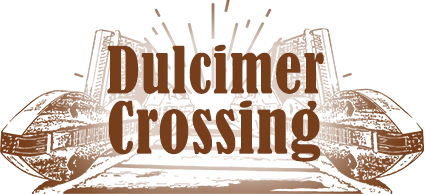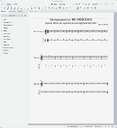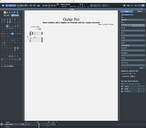Mountain Dulcimer Tablature Explained
Hi, this is Steve Eulberg for Dulcimer Crossing and today we're gonna take a look at using mountain dulcimer tablature as it's printed on paper.
Now, if you're not familiar with stringed instruments, the tablature side of musical notation is probably a brand new thing.
However, it is becoming very popular on the Internet, and sometimes all you see is tablature and you see no musical notation.
Tablature was developed for the 13 string lute in Europe many years ago because when there's more than one place to get a single note on an instrument, for example, if I play this d on the bass string at the 7th fret, it's the same as this d on the 3rd string and the middle, the 3rd fret on the middle string.
It's also the same note or same pitch as the open melody string.
So unlike a piano where there's only one place that I can put my finger to get at this particular d, that's 3 different places to get the exact same pitch.
So tablature is helpful in helping you to know which place is going to be the one that is suggested for a particular arrangement.
Now tablature looks on paper like 3 lines and the three lines correspond to the 3 courses of strings that are on the mountain dulcimer.
Sometimes the melody string is doubled, but usually on tablature you don't see two lines for representing the melody string.
It's possible but it's not necessary.
So there's a the one that would look like it's at the top on the page represents the strings as they're laying on your lap.
So the top line would be the same as the bass string.
The middle line will be the same as the middle string, and the lower line will be the same as the melody string.
The numbers that are used refer to the frets.
Normally on a Mountain dulcimer you have a first fret, a second fret, 3rd, 4th, 5th, 6th, 7th, 8th, 9th, 10th, etcetera.
This instrument for example you can see has a 6 and a half fret.
That gets listed as a 6 plus, a 6 and a half using the 1 over 2 symbol or 6 asterisk.
Depending on what instrument you're looking or what the form of tablature you're looking at.
The 1 and a half which is present on this instrument would have the same notations a 1 plus, a 1 asterisk, or a 1 with a 1 and a half symbol.
Sometimes you'll see a plus where there is no fret and an indication that it's time to bend the note.
Like at 4th fret, sometimes you wanna bend the note to get what you're getting.
That's some of these, specialized notation that happens with tablature.
But overall, you're gonna see 3 strings.
You're gonna see numbers which tell you which frets to use.











0 comments
Leave a comment
Please log in or register to post a comment